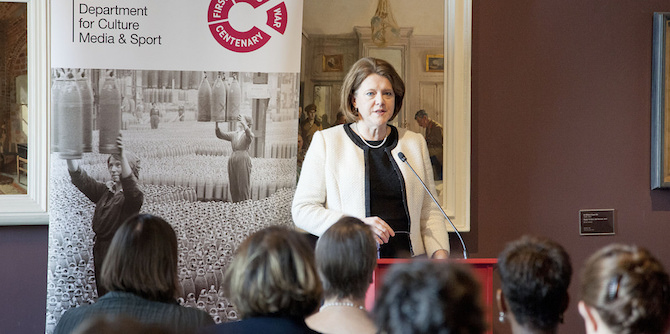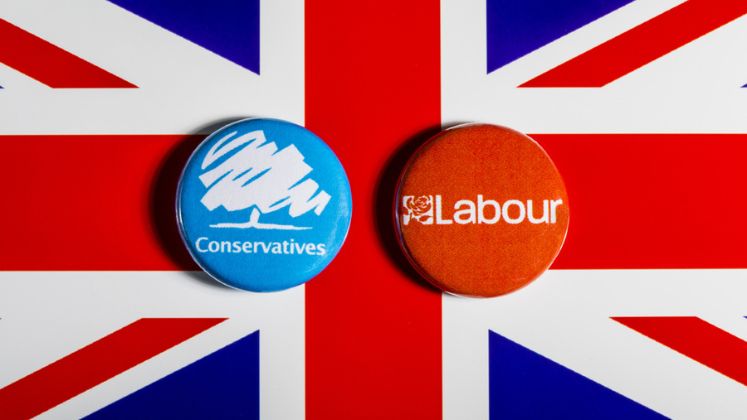 In his new book on the Conservatives since 1945, and in a public lecture at the LSE this Thursday, Tim Bale explores the reasons how and why parties change. He finds the fear of defeat is often just as important a motivator as defeat itself and that, when it comes to policy, what matters most are leaders. The supposed dominance of one faction or other, however, doesn’t seem to matter much.
In his new book on the Conservatives since 1945, and in a public lecture at the LSE this Thursday, Tim Bale explores the reasons how and why parties change. He finds the fear of defeat is often just as important a motivator as defeat itself and that, when it comes to policy, what matters most are leaders. The supposed dominance of one faction or other, however, doesn’t seem to matter much.
It’s easy to assume – as if it were somehow a simple matter of stimulus and response – that a big defeat will, or at least should, automatically lead a mainstream, electorally-driven political party to big changes, be they in personnel, in organization or in policy. But what if we are wrong? Political scientists have long been interested in the question of what drives parties to change who represents them, how they run themselves and what they stand for. Until now, however, their work has been confined to fairly abstract cross-national comparisons, on the one hand, and very brief country-case studies on the other. Even so, it casts doubt on the idea that change is always, or even mainly, driven by the ‘external shock’ of defeat and/or loss of office. It finds that leaders and, to a lesser extent, factional shifts make a big difference too.
In my new book The Conservatives since 1945: the Drivers of Party Change, I conduct what is probably the first full-length study designed explicitly to explore the reasons how and why parties change. The result, I hope, will interest not just political scientists and political historians but also anybody interested in politics.
Taking periods of Conservative opposition and government as separate cases, and using, as raw material, internal papers, memos and records of meetings from party archives, along with historical and contemporary accounts, memoirs and interviews, the book examines each case for evidence of changes in how the Party is organized, what human and material resources it draws upon, what it says it stands for and what it actually does. The book then explores the role of the three drivers most commonly expected to have played a part in producing that change, namely defeat (where one occurred), the leader and the dominant faction, before, in each case, going on to discuss additional factors that seemed to have played a part in prompting the Party do things differently.
As so often, the devil is in the detail – and there is more than enough of that detail in the book itself to satisfy and (fingers crossed) delight even the most demanding of political anoraks. That needn’t prevent us, however, from drawing some general lessons and I’ll be using a public lecture at the LSE on Thursday to talk about some of those. Cutting to the chase, I find, when it comes to the extent and scope of change, that a lot more of it occurs in office (and therefore after a victory rather than a defeat) than you might think, especially on the policy front and in terms of the Party’s public face. That said, the common wisdom that parties tend to forget all about organizational renewal until they find themselves out of power is pretty much borne out in reality.
When it comes to what drives change, losing elections matters; but the fear of defeat is often just as important a motivator as defeat itself. In any case, what matters most are leaders. I don’t sign up to the ‘the big man theory of history’ – not least because some men (and in the Tories’ case one woman!) are a heck of a lot bigger than others. But, especially when it comes to policy (Tory leaders before 1997 took hardly any interest in organizational matters), I do find that leaders really count. The supposed dominance of one faction or other, however, doesn’t seem to matter much – in the main because those factions don’t really have any coherence and clout in the absence of a dominant leader anyway. The party rank and file, inside or outside parliament, do virtually nothing to drive change either – and nor (perhaps surprisingly in the Tories’ case) do business people or (however much they like to claim a big influence) right-wing think tanks.
I also discovered that other things that political scientists interested in party change don’t normally factor into their models can be very important. For instance, the Party in opposition often made changes to policy in the expectation that they would help it get things right once in government – and in the hope that it could avoid the mistakes it made last time it was office. Taking care of unfinished business from last time round was likewise important. Particularly in government, pressure arising either from events or (legally-binding) international agreements could prove crucial, too, especially on policy. ‘Path dependence’ (the fact that a course of action, even if it is ‘sub-optimal’, can be made all but inevitable by choices made earlier on, sometimes by other parties) mattered, as well. It’s also the case that significant changes right across the board were driven by inexorable social and geo-political shifts which were way beyond the Party’s – indeed any party’s – control.
This interaction of structure and agency, this interplay of ideas, interests, institutions, and individuals, while rarely completely random, inevitably makes politics less predictable than some political scientists might like it to be. However, it ensures that politics remains a source of endless fascination, both for those who are directly involved and for those of us who hope to understand them.
If all this sounds like the sort of thing you’re interested in, do come along. If you think you disagree with me, all the better: there will be plenty of time for debate and discussion in the Q&A session. If you can’t make it, then perhaps you’ll read the book sometime. Whether it persuades you, of course, is another matter….
Note: This article gives the views of the author, and not the position of the British Politics and Policy blog, nor of the London School of Economics. Please read our comments policy before posting.
Tim Bale is Professor of Politics at the School of Politics and International Relations at Queen Mary, University of London. He is the author of The Conservative Party from Thatcher to Cameron (Polity, 2010). His latest book is The Conservatives since 1945: the Drivers of Party Change (Oxford University Press, 2012).






